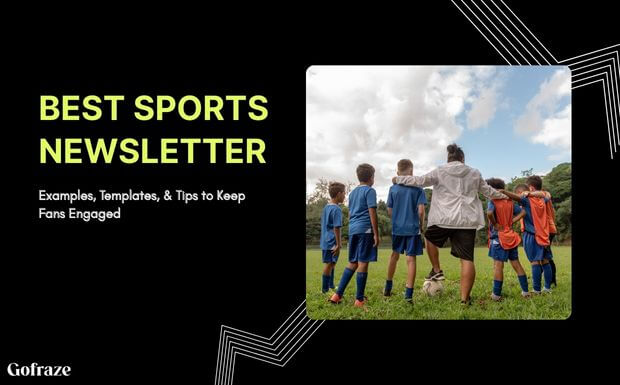Email Marketing for Car Dealerships: Strategies, Ideas & Best Practices
Explore powerful email marketing strategies for car dealerships. Learn to attract, engage, and convert leads into loyal customers with ease.
The traditional sales funnel focuses on acquiring new customers first, then converting them into loyal buyers. However, the Inverted Sales Funnel flips this approach by prioritizing existing customers, encouraging retention, expansion, and advocacy before acquisition. This method leads to stronger customer relationships, higher lifetime value, and sustainable business growth.
In this article, we’ll explore why businesses should adopt an inverted sales funnel, the key stages involved, how to build one, and the best practices for maximizing its effectiveness.
Shifting from a conventional sales funnel to an inverted one provides several advantages:
Retaining existing customers is far more cost-effective than acquiring new ones. Loyal customers already trust your brand, reducing marketing costs and increasing the chances of repeat purchases.
Long-term customers contribute to consistent revenue through repeat purchases, upsells, and subscriptions. A well-structured inverted funnel maximizes the lifetime value of each customer.
Satisfied customers naturally become brand advocates, sharing their positive experiences with others. This word-of-mouth marketing brings in new customers at a much lower cost than paid advertising.
By prioritizing customer satisfaction, businesses build stronger relationships, leading to improved loyalty and long-term success. Personalized interactions and proactive support make customers feel valued and engaged.
Unlike the traditional funnel, which starts with awareness and ends with retention, the inverted funnel begins with existing customers and expands outward.
The foundation of the inverted funnel is keeping existing customers engaged. Companies achieve this by providing excellent customer service, maintaining regular communication, and offering loyalty incentives.
Once retention is established, businesses focus on increasing customer value through upselling (offering higher-end products/services) and cross-selling (suggesting complementary products). This boosts revenue without acquiring new customers.
Loyal customers become brand ambassadors who willingly promote the business. Encouraging reviews, testimonials, and social sharing helps spread positive word-of-mouth.
By leveraging referrals, testimonials, and brand advocacy, new customers are attracted naturally. Instead of spending heavily on ads, businesses gain organic leads from satisfied customers.
Implementing an inverted sales funnel requires a strategic approach that prioritizes existing customers while fostering organic growth.
Understanding customer behavior is essential. Use data analytics to track purchasing patterns, feedback, and engagement levels. This helps tailor marketing efforts for better retention.
Stay connected with customers through personalized emails, social media interactions, and customer support. Regular engagement builds trust and strengthens relationships.
Loyalty programs, exclusive discounts, and premium experiences make customers feel appreciated. Providing ongoing value encourages long-term commitment.
Customer Relationship Management (CRM) tools help track interactions and refine marketing strategies. Automation ensures consistent engagement without manual effort.
Develop referral programs that reward customers for bringing in new business. Request testimonials and highlight user-generated content to enhance credibility.
Tracking key performance indicators (KPIs) ensures the success of an inverted funnel strategy:
Always put the customer experience at the center of your strategy. Happy customers are more likely to stay, spend more, and advocate for your brand.
– Actively seek feedback to understand pain points and improve services.
– Offer seamless support across multiple touchpoints to enhance user satisfaction.
Focus on long-term engagement rather than short-term sales. Meaningful connections with customers lead to stronger loyalty.
– Provide exclusive benefits or loyalty programs to keep customers engaged.
– Maintain open communication and consistently deliver value to build trust.
Tailor interactions based on customer preferences, purchase history, and behavior. Personalization fosters a deeper connection with your brand.
– Use AI-driven insights to recommend relevant products or services.
– Segment your audience and craft targeted messaging for better engagement.
Anticipate customer needs and address issues before they arise. Regular check-ins and updates improve satisfaction.
– Implement automated follow-ups to maintain continuous engagement.
– Provide educational content and proactive solutions to empower customers.
Monitor funnel performance and make data-driven adjustments. Optimization ensures your strategies remain effective and relevant.
– Leverage analytics to identify drop-off points and improve conversion rates.
– Test and refine messaging, offers, and user experiences to enhance effectiveness.
Building an inverted sales funnel helps you drive customer loyalty, increase retention, and turn satisfied customers into brand advocates. Start optimizing your strategy today!
The inverted sales funnel is a game-changing approach that prioritizes customer retention, loyalty, and advocacy before acquisition. By focusing on long-term relationships, businesses can drive sustainable growth, increase customer lifetime value, and reduce marketing costs.
Shifting to this model requires analyzing customer data, engaging consistently, offering value, and leveraging technology. Businesses that adopt this strategy will not only retain customers but also turn them into powerful advocates who fuel organic growth.

Explore powerful email marketing strategies for car dealerships. Learn to attract, engage, and convert leads into loyal customers with ease.

Learn how to craft the perfect webinar invitation email using key tips, templates, and examples to boost sign-ups and engagement.

Discover winning sports newsletter examples, essential elements, and expert tips to craft high-impact email campaigns your fans will love.

Get unlimited forms that turn your traffic into real subscribers — totally free
Start now - free forever